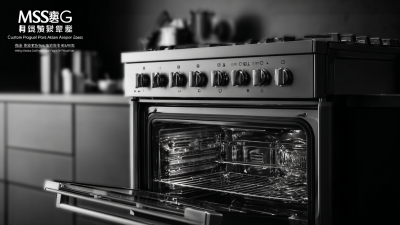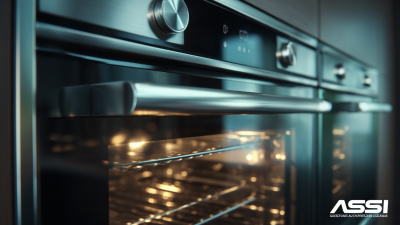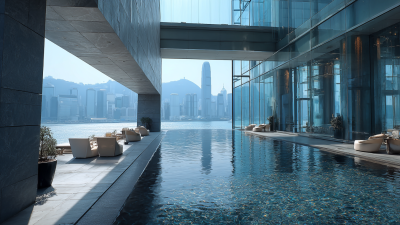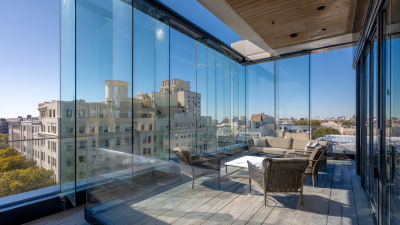
In the realm of modern architecture, the integration of tempered glass panels has transformed aesthetic and functional paradigms. As leading architect Dr. Evelyn Matthews aptly states, “Tempered glass panels not only enhance the visual appeal of buildings but also provide unparalleled safety and energy efficiency.” This encapsulates the essence of why tempered glass is increasingly favored in contemporary designs, making structures not only more attractive but also more sustainable.
Tempered glass panels are celebrated for their strength, thermal resistance, and versatility, which align seamlessly with the evolving demands of design in the 21st century. Their ability to withstand extreme weather conditions and impact makes them an ideal choice for both residential and commercial applications. As we delve into the "Top 10" benefits of these innovative materials, it becomes clear that their incorporation is a pivotal shift in architectural methodology, emphasizing safety, aesthetics, and environmental responsibility.
In an age where sustainability is paramount, the use of tempered glass panels signifies a commitment to modern design that prioritizes both form and function. By exploring these ten critical advantages, architects and builders can better understand how tempered glass contributes to creating safer, more efficient, and visually stunning environments.

Tempered glass panels have emerged as a vital component in modern architecture, primarily due to their exceptional strength and durability. Unlike standard glass, tempered glass is processed through controlled thermal treatment, which enhances its resilience against impact and thermal stresses. According to the Glass Association of North America (GANA), tempered glass is approximately five to seven times stronger than standard glass of the same thickness. This strength makes it an ideal choice for high-rise buildings, storefronts, and interior applications where safety and security are paramount.
One of the key advantages of tempered glass panels is their ability to withstand natural elements. They are less likely to crack under extreme temperature changes, making them suitable for climates with fluctuating weather conditions. A study published in the Journal of Architectural Engineering indicates that well-designed tempered glass installations can exhibit a lifespan of over 20 years with minimal maintenance. By utilizing tempered glass, architects not only meet safety regulations but also enhance the aesthetic appeal of their projects.
Tips for choosing tempered glass panels include ensuring proper installation to maximize safety and durability. Collaborate with reputable suppliers who comply with safety standards, and consider using a laminated version for added protection. Regular inspections for signs of wear or damage can also extend the lifespan of your glass installations. By integrating these practices, you can fully leverage the benefits of tempered glass in modern architectural design.
Tempered glass panels play a crucial role in maximizing energy efficiency in modern building design. With an increasing focus on sustainability, architects are integrating advanced glass technologies that not only enhance the aesthetic appeal of structures but also contribute to energy savings. The ability of tempered glass to withstand thermal stress makes it an ideal choice for large windows and facades, allowing natural light to penetrate while reducing the need for artificial lighting. This effectively lowers electricity consumption, aligning with the growing emphasis on energy-efficient designs.
Moreover, the introduction of innovative building-integrated photovoltaic (BIPV) solutions demonstrates how temperate glass can further enhance energy efficiency. These systems seamlessly incorporate solar energy harvesting into building envelopes, making it possible to generate renewable energy while maintaining structural integrity and aesthetic quality. As energy-efficient construction becomes a priority, the demand for tempered glass and its applications in both traditional and multifunctional designs continues to rise, signifying a shift towards a more sustainable architectural future that prioritizes energy conservation and environmental responsibility.
Tempered glass panels have emerged as a crucial component in modern architecture, not only for their structural integrity but also for their significant aesthetic appeal. According to the International Glass Association, the use of glass in building façades has increased by 25% over the past decade, driven largely by the demand for natural light and panoramic views. Tempered glass, known for its strength and thermal resistance, allows architects to create expansive glass walls and open spaces that enhance the overall visual experience of a building.
Moreover, tempered glass can be tailored to various finishes, from clear and tinted to patterned and reflective surfaces, providing unlimited design possibilities. A report from the Architectural Glass Manufacturers Association notes that architects favor tempered glass for its ability to harmonize with other materials, such as steel and wood, creating a stunning contrast that elevates the design of contemporary buildings. The visual benefits of tempered glass extend beyond aesthetics; they play a pivotal role in energy efficiency, allowing for better light management while reducing heating and cooling costs, thereby further enhancing the allure of modern architectural designs.
Tempered glass panels are increasingly popular in modern architecture, not just for their aesthetic appeal but also for their enhanced safety features. Unlike regular glass, tempered glass undergoes a process of extreme heating and rapid cooling, making it significantly stronger and more resistant to thermal stress. This increased durability translates to fewer breakage incidents, which is crucial in high-traffic areas or in structures with large glass surfaces.
When considering the use of tempered glass, it’s important to remain mindful of safety features. In the event of breakage, tempered glass shatters into small, blunt pieces rather than sharp shards, minimizing the risk of injury. Additionally, architects and builders should ensure proper installation techniques to maximize the structural integrity and safety of the glass panels.
Tips: Always consult with a glazier who specializes in tempered glass to ensure compatibility with your design. Additionally, consider incorporating protective frames or barriers in areas where glass is exposed to high impact or where safety is a primary concern. Regular inspections are also essential to maintain the integrity and appearance of tempered glass installations.
Tempered glass has become a popular choice in modern architecture, not only for its aesthetic appeal but also for its significant sustainability advantages. This type of glass undergoes a rigorous tempering process that enhances its strength and durability, making it less likely to break and more suitable for a variety of environmental conditions.
As a result, buildings utilizing tempered glass can maintain their structural integrity over time, reducing the need for replacements and thereby minimizing waste.
Moreover, tempered glass panels contribute to energy efficiency in buildings. Their ability to reflect heat reduces the reliance on artificial heating and cooling systems, which lowers energy consumption.
This is particularly important in an era where architects and builders are increasingly aware of their environmental impact. Additionally, the recyclability of tempered glass at the end of its life cycle further supports sustainable construction practices, allowing it to be repurposed into new products rather than ending up in landfills.
The combination of these factors positions tempered glass as a key component in promoting sustainability within the realm of modern architecture.





